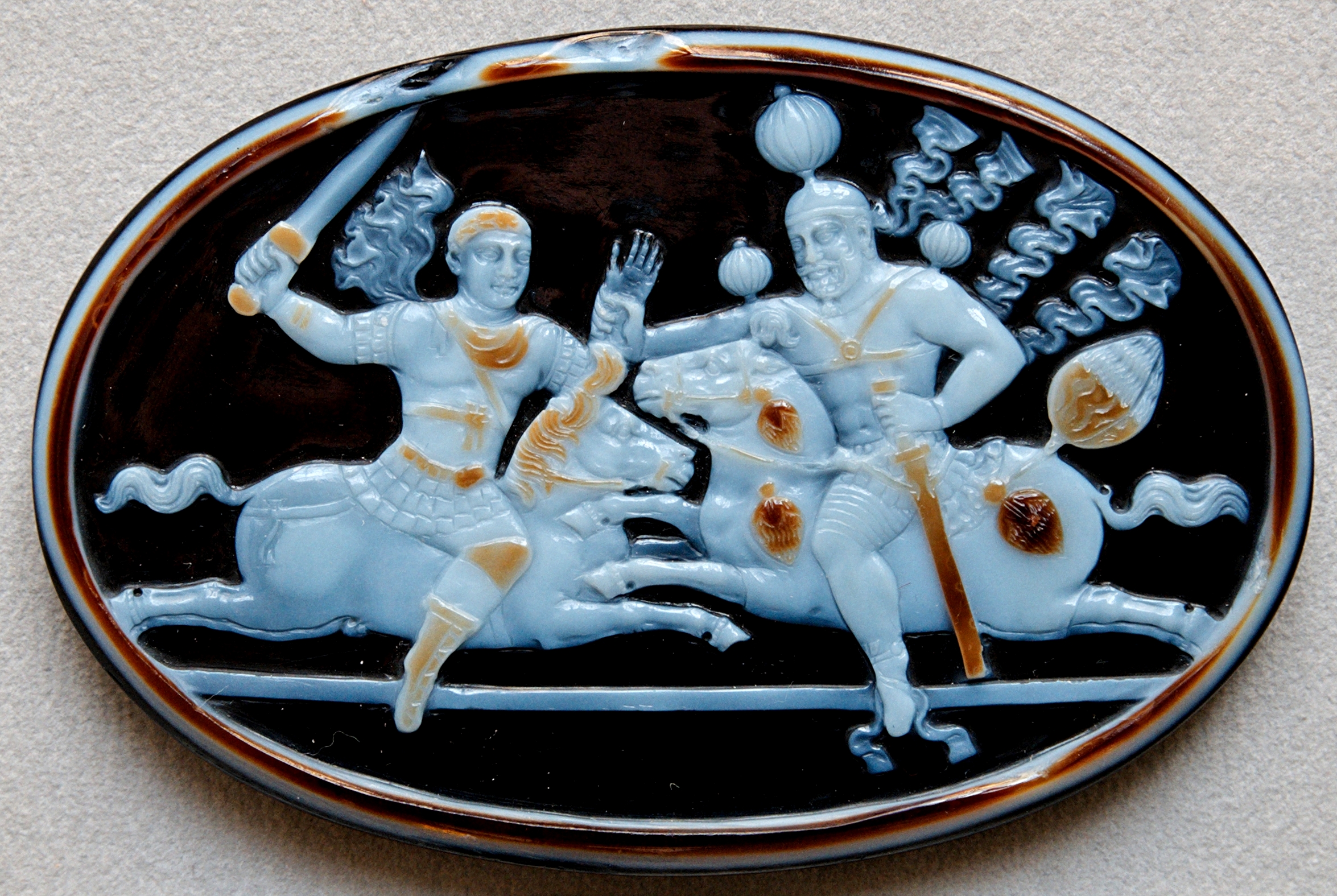Cameo with Valerian and Shapur I on:
[Wikipedia]
[Google]
[Amazon]
 The Cameo with Valerian and Shapur I is now on display in the
The Cameo with Valerian and Shapur I is now on display in the
The cameo on the website of the museum
 The Cameo with Valerian and Shapur I is now on display in the
The Cameo with Valerian and Shapur I is now on display in the Cabinet des M├®dailles
The BnF Museum or Museum of the Biblioth├©que nationale de France, formerly known as the Cabinet des M├®dailles, is a significant art and history museum in Paris. It displays collections of the ''D├®partement des Monnaies, M├®dailles et Antiques ...
of the Biblioth├©que nationale de France in Paris. It has the inventory number Cam├®e 360. and was bought in 1893. The cameo is 6,8 cm high and 10,3 cm wide and made of sardonyx
Onyx primarily refers to the parallel banded variety of chalcedony, a silicate mineral. Agate and onyx are both varieties of layered chalcedony that differ only in the form of the bands: agate has curved bands and onyx has parallel bands. The c ...
, and is thought to date to about 260 AD. For the carving, the different colored layers of the stone was used. The background is dark, the figures are white and details are again dark again as they are on the highest level.
The cameo shows two riders. Both horses are in flying gallop. On the right side appears the Sasanian
The Sasanian () or Sassanid Empire, officially known as the Empire of Iranians (, ) and also referred to by historians as the Neo-Persian Empire, was the last Iranian empire before the early Muslim conquests of the 7th-8th centuries AD. Named ...
king Shapur I
Shapur I (also spelled Shabuhr I; pal, ÉŁ▒ÉŁ¦ÉŁ»ÉŁźÉŁ¦ÉŁźÉŁ®, ┼Ā─übuhr ) was the second Sasanian King of Kings of Iran. The dating of his reign is disputed, but it is generally agreed that he ruled from 240 to 270, with his father Ardas ...
(reigned AD 241ŌĆō272). He wears a helmet with a globe crest. His shoulders also have attached globes. His right arm is holding the left arm of the Roman emperor Valerian (reigned AD 253ŌĆō260). The Roman emperor holds in his right hand a sword (''gladius
''Gladius'' () is a Latin word meaning "sword" (of any type), but in its narrow sense it refers to the sword of ancient Roman foot soldiers. Early ancient Roman swords were similar to those of the Greeks, called '' xiphe'' (plural; singular ''xi ...
''). He is beardless and has on his head a laurel wreath
A laurel wreath is a round wreath made of connected branches and leaves of the bay laurel (), an aromatic broadleaf evergreen, or later from spineless butcher's broom (''Ruscus hypoglossum'') or cherry laurel (''Prunus laurocerasus''). It is a s ...
, identifying him as Roman emperor. Though the client was presumably Sasanian, the style is Greco-Roman, as the artist presumably was.
The scene shows most likely the capturing of emperor Valerian by Shapur I in the Battle of Edessa
The Battle of Edessa took place between the armies of the Roman Empire under the command of Emperor Valerian and Sasanian forces under Shahanshah (King of the Kings) Shapur I in 260. The Roman army was defeated and captured in its entirety ...
in AD 260. The battle was a huge success for the Sasanian troops as they managed to seize the Roman emperor, an event that was celebrated on several monuments.
In 256, the Sasanians conquered the Greek city of Antioch
Antioch on the Orontes (; grc-gre, ß╝ł╬ĮŽä╬╣ŽīŽć╬Ą╬╣╬▒ ß╝Ī ß╝ÉŽĆßĮČ ßĮłŽüŽī╬ĮŽä╬┐Žģ, ''Anti├│kheia h─ō ep├¼ Or├│ntou'', Learned ; also Syrian Antioch) grc-koi, ß╝ł╬ĮŽä╬╣ŽīŽć╬Ą╬╣╬▒ ß╝Ī ß╝ÉŽĆßĮČ ßĮłŽüŽī╬ĮŽä╬┐Žģ; or ß╝ł╬ĮŽä╬╣ŽīŽć╬Ą╬╣╬▒ ß╝Ī ß╝ÉŽĆß ...
and it seems likely that many craftsmen and artists were taken. It seems possible that the cameo was made by such an artist. Carved gem
An engraved gem, frequently referred to as an intaglio, is a small and usually semi-precious gemstone that has been carved, in the Western tradition normally with images or inscriptions only on one face. The engraving of gemstones was a major l ...
s was a Ptolemaic invention and a common art in the Greco-Roman culture that was also adopted by the Sasanians. The design of the Shapur Cameo combines both Roman and Sasanian styles.Nils Ritter (January 2017). Gemstones in pre-Islamic Persia: Social and Symbolic Meanings of Sasanian Seals. In: ''Gemstones in the first Millennium AD: Mines, Trade, Workshops and Symbolism''. Hg. von Dieter Quast. Mainz 2017.
Weblinks
The cameo on the website of the museum
References